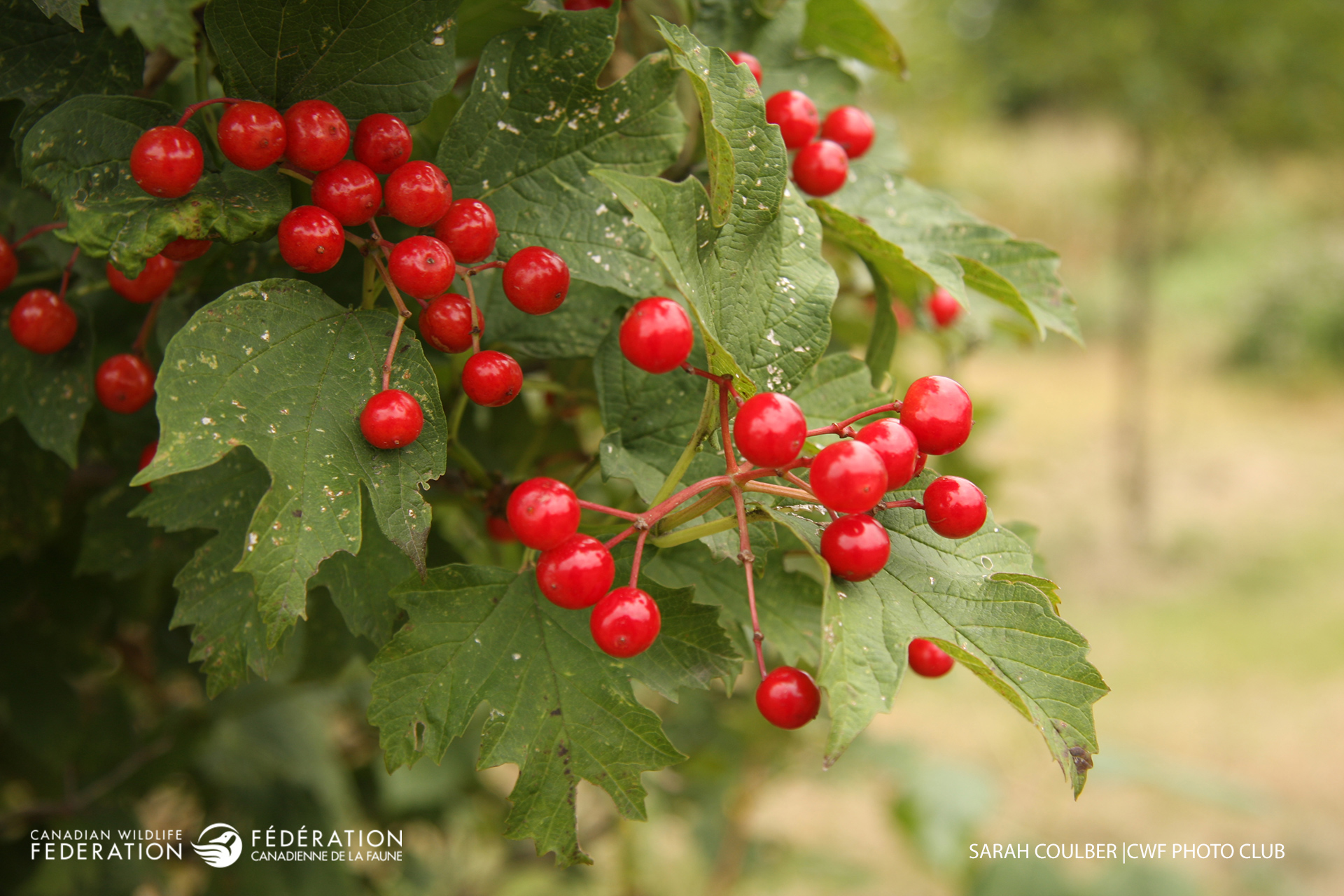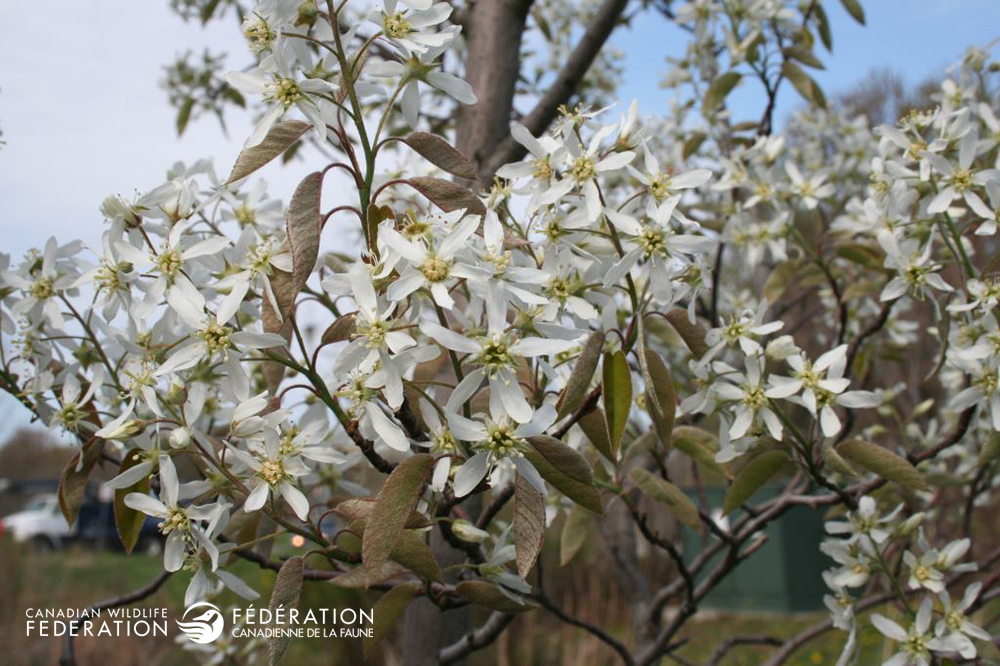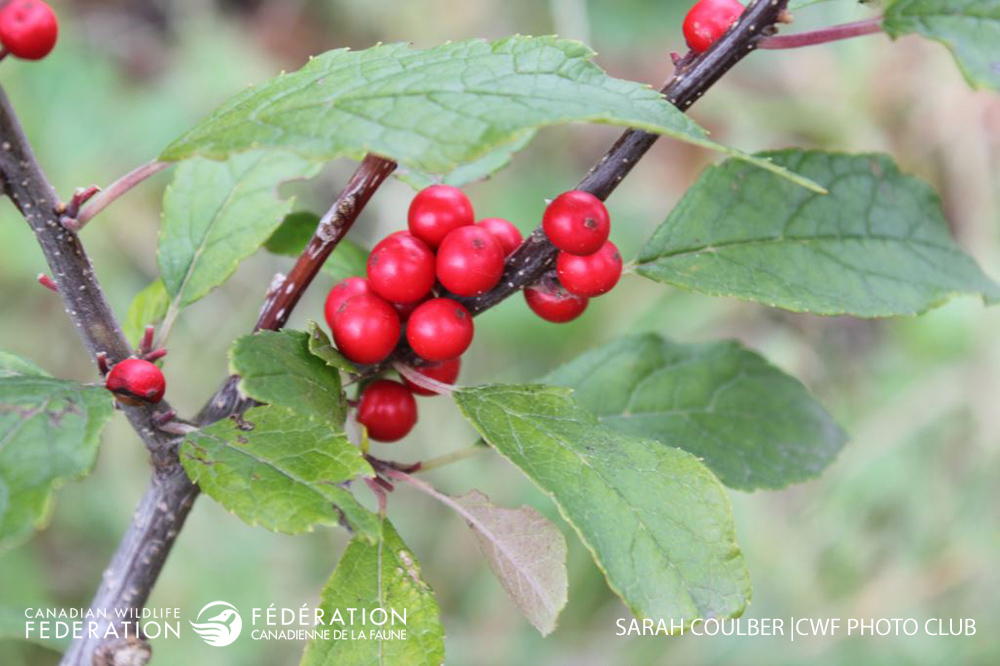Make no mistake. Stocking up on birdseed and stocking your feeder on a regular basis is an incredibly helpful way to support the birds in your backyard through the fall and winter. They need nutrients as they molt and migrate. That said, you can also supply other beneficial nutrients by planting fruit producing shrubs that’ll keep your favourite feathered friends satiated. Here are four shrubs you might consider adding to your property!
American Cranberrybush

Zones: 2-7
If you’re looking for a statement bush, look no further than the American Cranberrybush. This shrub can grow up to 2.5 metres tall and three metres wide! Its red berries appear in the summer and it keeps its berries right through the winter (unless of course they are gobbled up by hungry birds!). Songbirds enjoy noshing on these berries and as a bonus, this bush is a larval host for the Spring Azure Moth!
Black Chokeberry


Zones: 3-9
This large shrub, which can grow up to nearly two metres tall and over three metres wide, is an easy plant to grow. It doesn’t need much maintenance and it’s happy in full sun or partial shade. While you might be tempted to pick Black Chokeberries for your jams and jellies, the birds in your neck of the woods will thank you if you leave them alone. So many bird species adore Black Chockberries including American Robins, Downy Woodpeckers, Northern Flickers, Hairy Woodpeckers and more!
Serviceberry

Zones: 3-9
Sweeter than blueberries and raspberries, many serviceberry species (of which there are plenty) have delectable dark red or purple fruits that are irresistible to plenty of backyard birds like Northern Flickers, Downy Woodpeckers, Brown Thrashers, Northern Cardinals, Rose-breasted Grosbeaks and more. This shrub (or tree!) is a larval host to butterflies like Viceroys and admirals too!
Winterberry

Zones: 3-9
Many fruit-bearing shrubs have leaves that last all winter long, but some, like the Winterberry, lose their leaves during the autumn months leaving only their berries behind. This makes them incredibly easy to spot! Moreover, Winterberry berries are orange and red in colour – and songbirds love to peck away at them through the colder weather.
